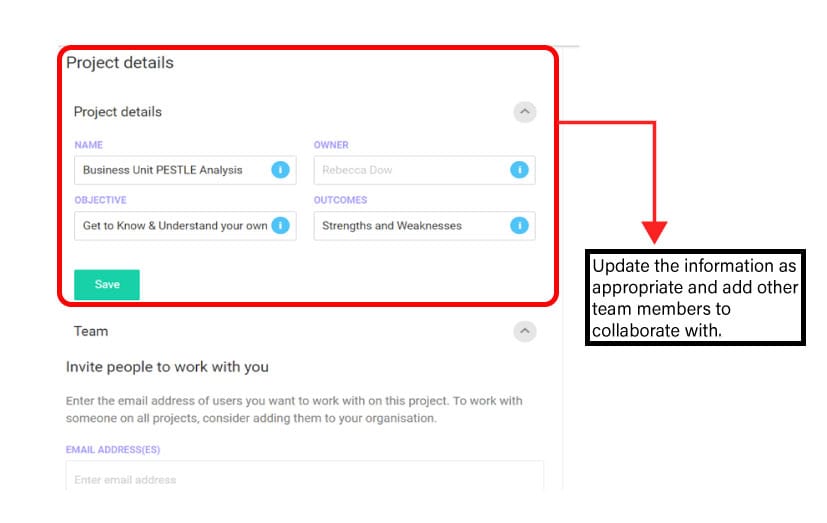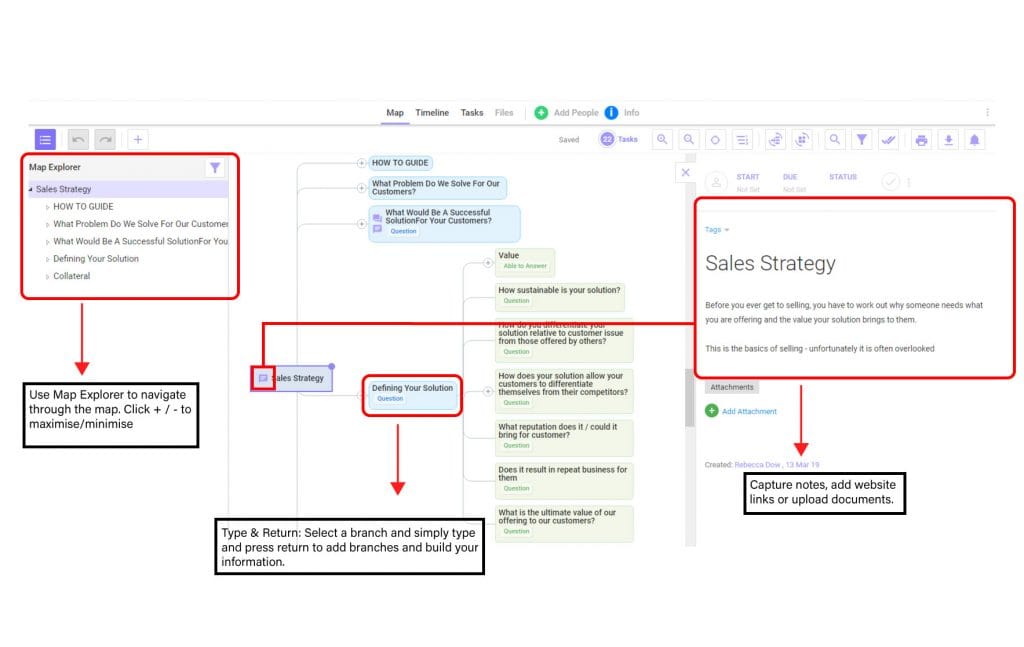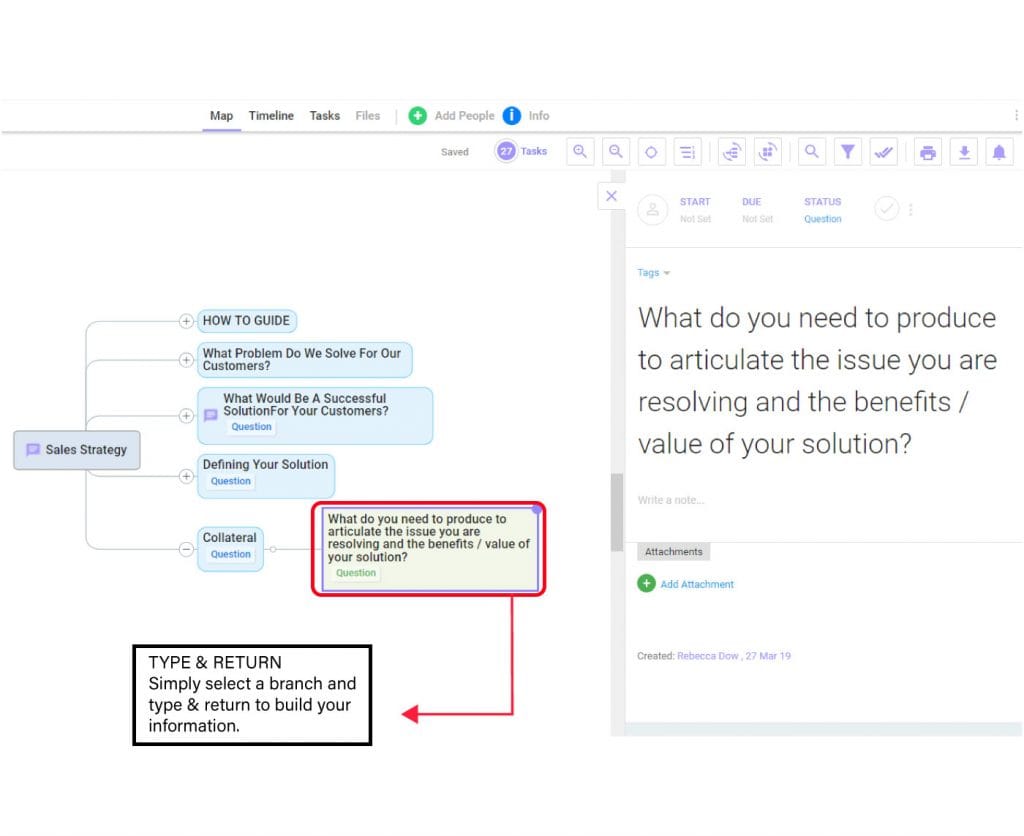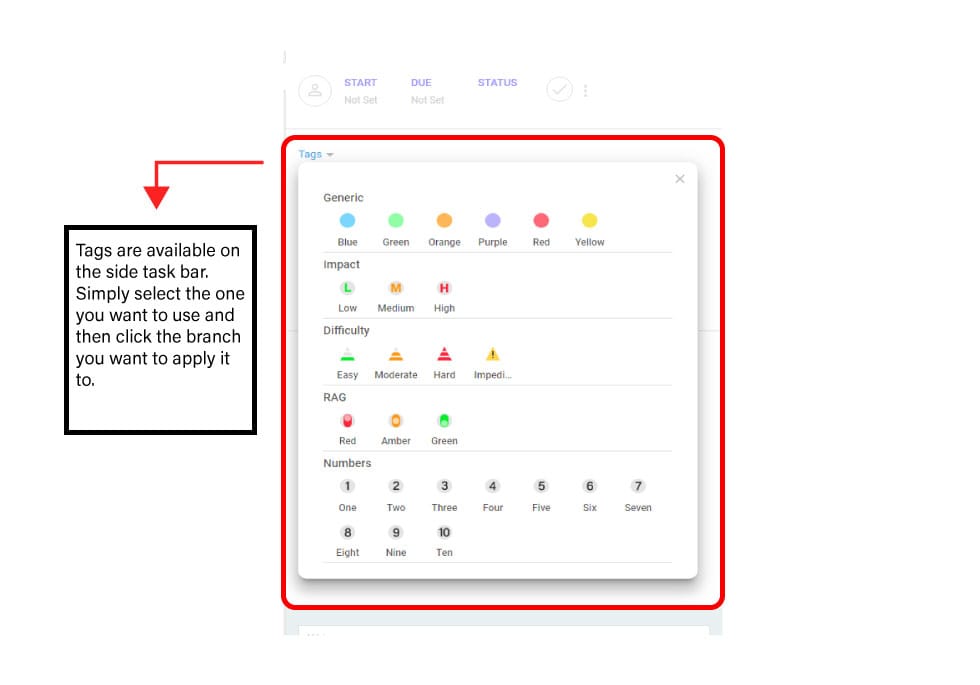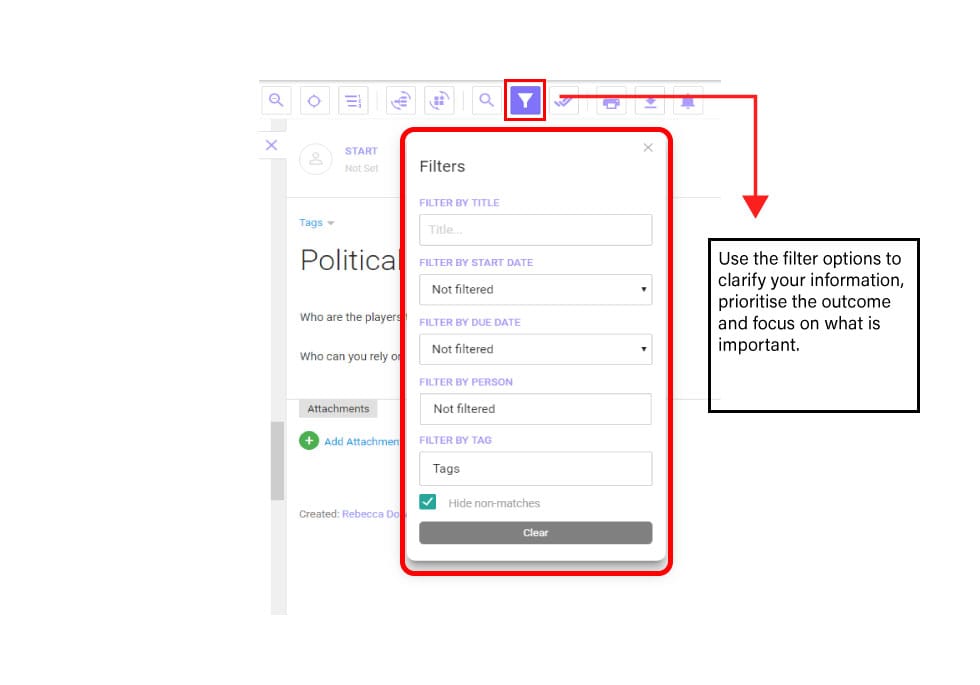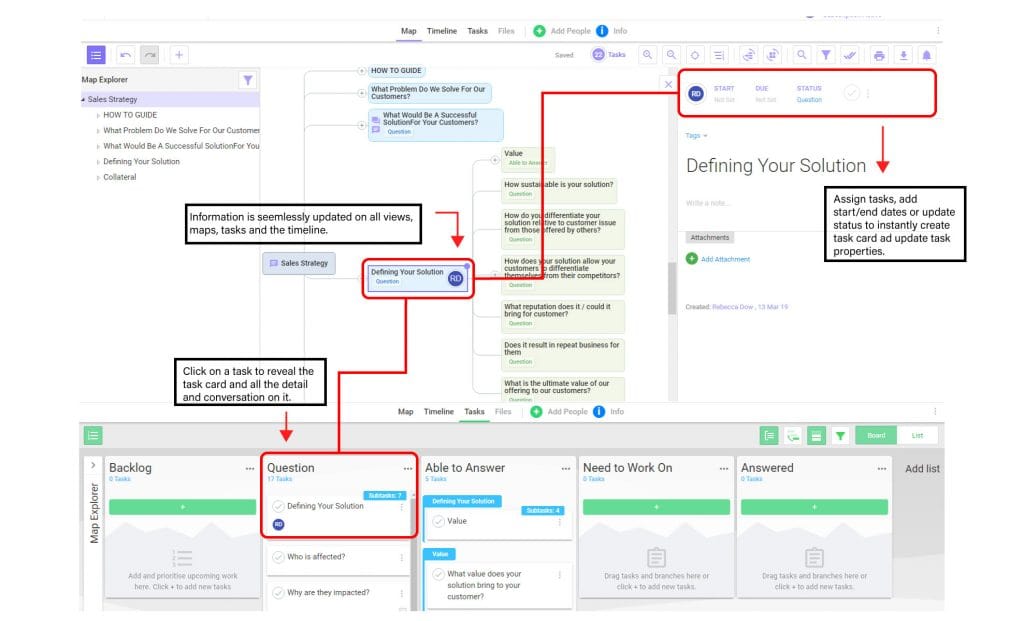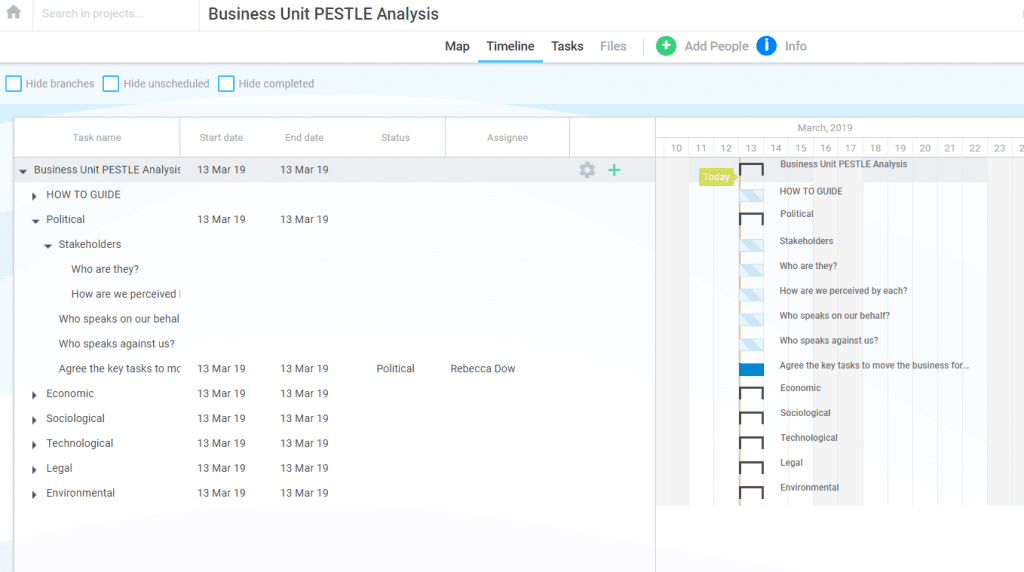Use this board as the basis for a software development team’s workflow. Modify the lists and order to suit your team’s needs (e.g. you might want a column for blocked tasks).
Prioritise work by re-ordering card within a list with drag and drop. The card at the top of the list is the top priority item. Try to keep your work in progress to a minimum by doing more finishing and less starting! Focus on getting tasks on the right-hand side of the board to done.
Add cards, assign them to team mates and get your team to move they across the board and re-assign them as work progresses.
You can add notes and links to tasks to give extra details e.g. specification, acceptance criteria, links to UI designs. You can also use comments to start discussions with your teammates.
Once a task is fully complete you can tick it off to remove it from the task board.
STEP 4: CREATE A PLAN
The Task Board is designed to bring a high degree of visibility, process flow and all-important tracking to this stage. Task Cards are used to record the key task properties / data, including owner, start date, due date and status. Progress of Tasks through a pre-determined journey is visualised and tracked by simply moving the cards along “swim lanes.
Once again, the Template has been pre-populated to give you some idea of how MindGenius Online can manage the process. However, you can customise the “swim lane” headings to adapt or create your own process / project flow or journey through to completion.
You will note that any Tasks created using the mapping interface have been synchronised through to the Task Board. You can, of course, add new Task Cards within the Task Board simply by using the green + icons.
MindGenius Online provides the ability to create Tasks, including assigning ownership, timescales and deadlines.
Task information can easily be applied to map Branches (as shown pre-populated in the Template) and / or using the Task Board (Tasks tab).
Tasks added to a Map are automatically added as Task Cards to the MindGenius Online Task Board.
As start and end dates are added to the task cards the timeline will also give an alternative view for understanding the project current status. The example shown (from the Template) shows how the Timeline has interpreted the Task Start and End Dates from the Task Cards, but importantly portraying the project data in an alternative view to aid understanding of the overall project flow and current status.


